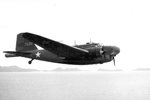oldcrowcv63
Tech Sergeant
Stinson Reliant or Voyager???  or maybe the Grumman Widgeon?
or maybe the Grumman Widgeon? 
Don't know if this has been posted before:
View: https://www.youtube.com/watch?v=WJi9EttppVk
On the surface, the results don't look terribly compelling. Two subs were apparently sunk or seriously damaged, one by a Grumman Widgeon off NJ and one by a Stinson off the Florida Coast, but there were apparently more instances of a CAP civilian piloted, privately owned light planes armed or unarmed aggressively flying at wave top height toward a periscope feather to disrupt a sub attack on allied coastal shipping suggesting the effort was more than simply a cosmetic veneer to US coastal defense. According to:
http://www.capmembers.com/media/cms/CAP_UBOATSDOWN_ECFBEC512D7DB.pdf
and:
Fact Sheet - Civil Air Patrol
"173 U-Boat sighting were reported , bombs or depth charges were dropped at 57 of these sighted U-Boats."
To the 65 aerial Minute Men aerial militia of the twentieth Century USA who gave their lives on operations during WW2 of which there were 26 airman lost in 13 planes.


Anyone living or vacationing near Nags Head, on the North Carolina Outer Banks may want to visit the CAP museum at the Dare County Regional Airport terminal building. The same airport is where Tommy Blackburn's VF-17 Jolly Roger squadron trained during WW2. The museum also has displays and items recounting that history as well.
Don't know if this has been posted before:
View: https://www.youtube.com/watch?v=WJi9EttppVk
On the surface, the results don't look terribly compelling. Two subs were apparently sunk or seriously damaged, one by a Grumman Widgeon off NJ and one by a Stinson off the Florida Coast, but there were apparently more instances of a CAP civilian piloted, privately owned light planes armed or unarmed aggressively flying at wave top height toward a periscope feather to disrupt a sub attack on allied coastal shipping suggesting the effort was more than simply a cosmetic veneer to US coastal defense. According to:
http://www.capmembers.com/media/cms/CAP_UBOATSDOWN_ECFBEC512D7DB.pdf
and:
Fact Sheet - Civil Air Patrol
"173 U-Boat sighting were reported , bombs or depth charges were dropped at 57 of these sighted U-Boats."
To the 65 aerial Minute Men aerial militia of the twentieth Century USA who gave their lives on operations during WW2 of which there were 26 airman lost in 13 planes.



Anyone living or vacationing near Nags Head, on the North Carolina Outer Banks may want to visit the CAP museum at the Dare County Regional Airport terminal building. The same airport is where Tommy Blackburn's VF-17 Jolly Roger squadron trained during WW2. The museum also has displays and items recounting that history as well.
Last edited:

